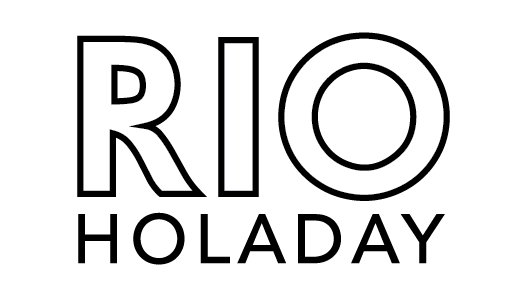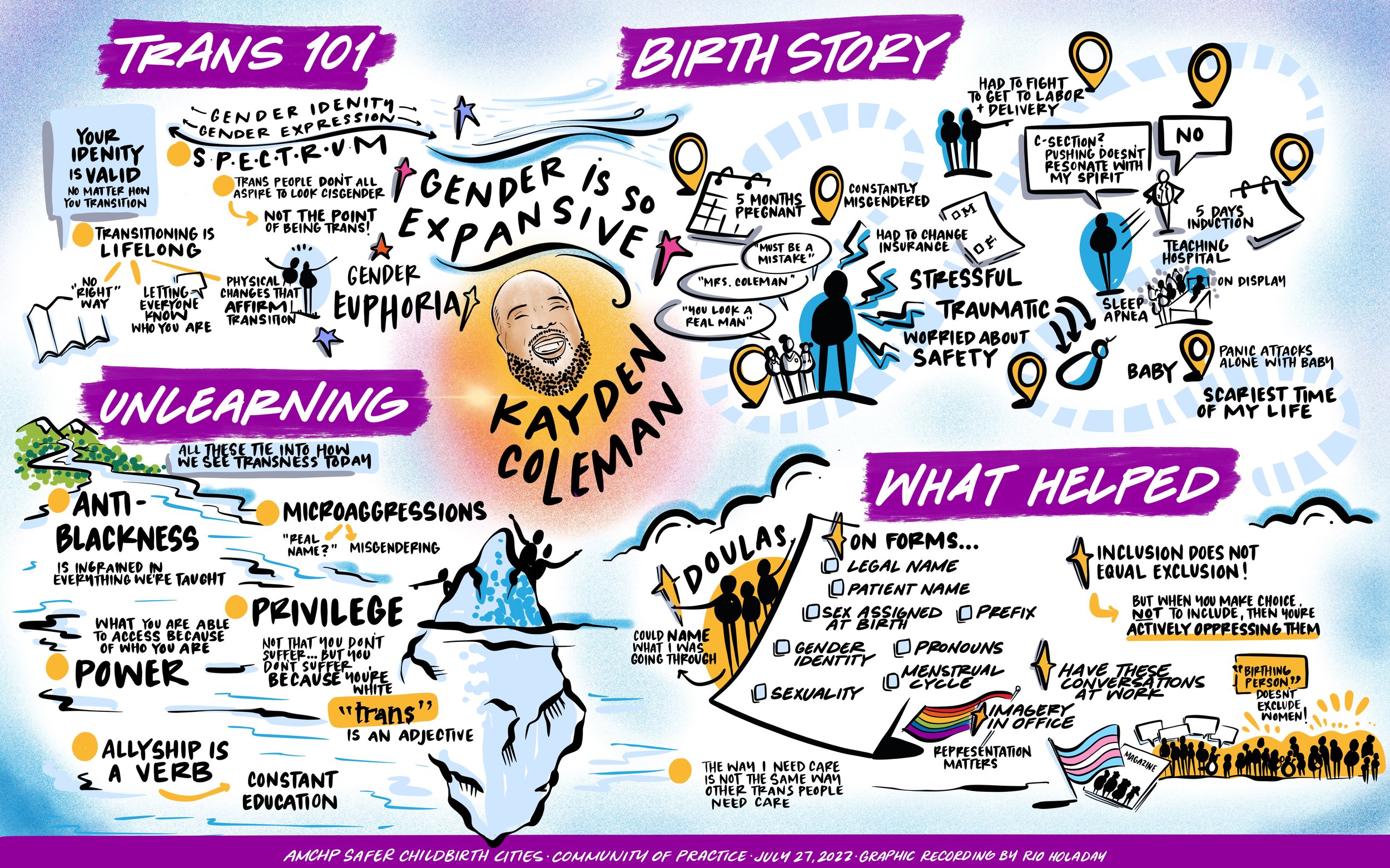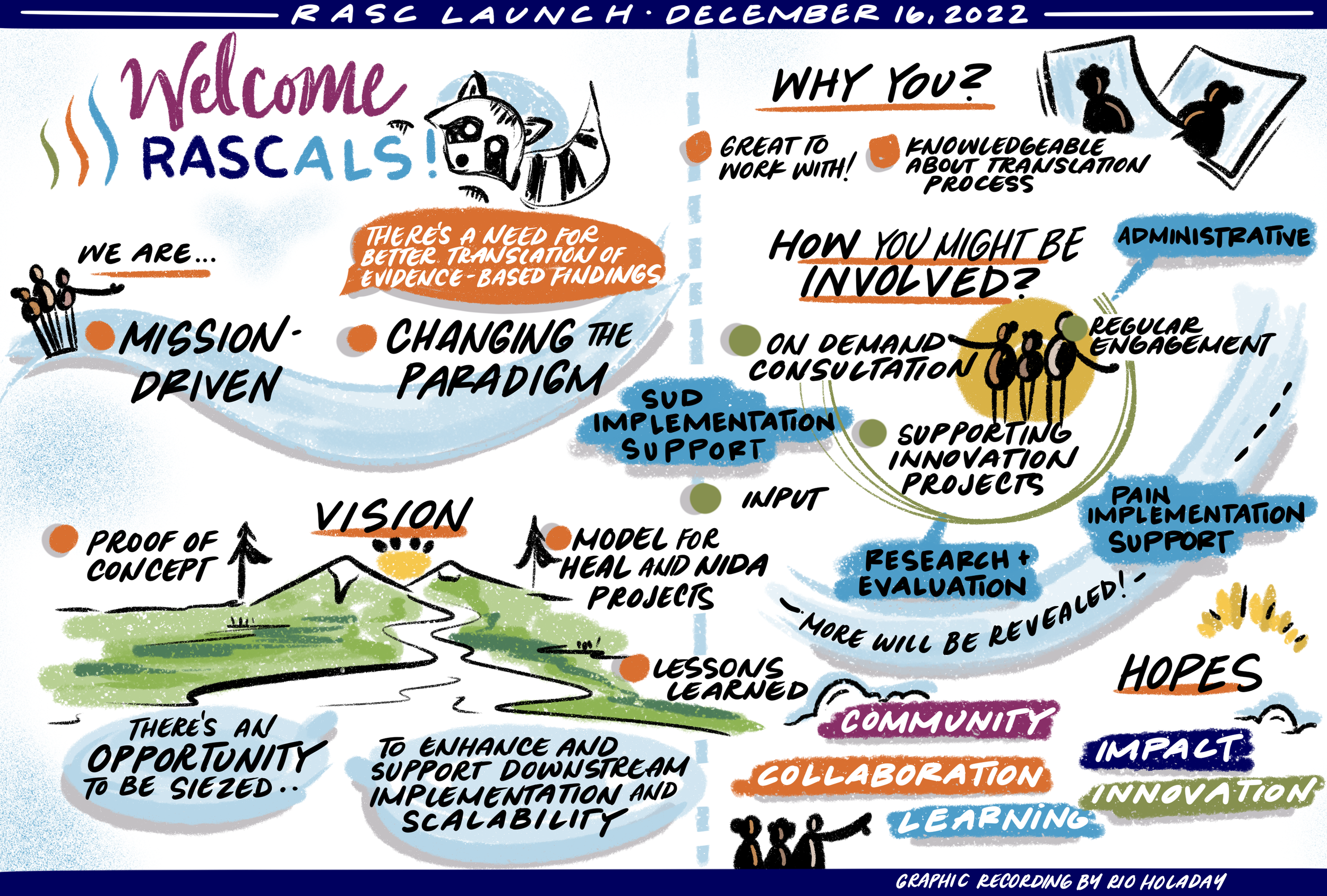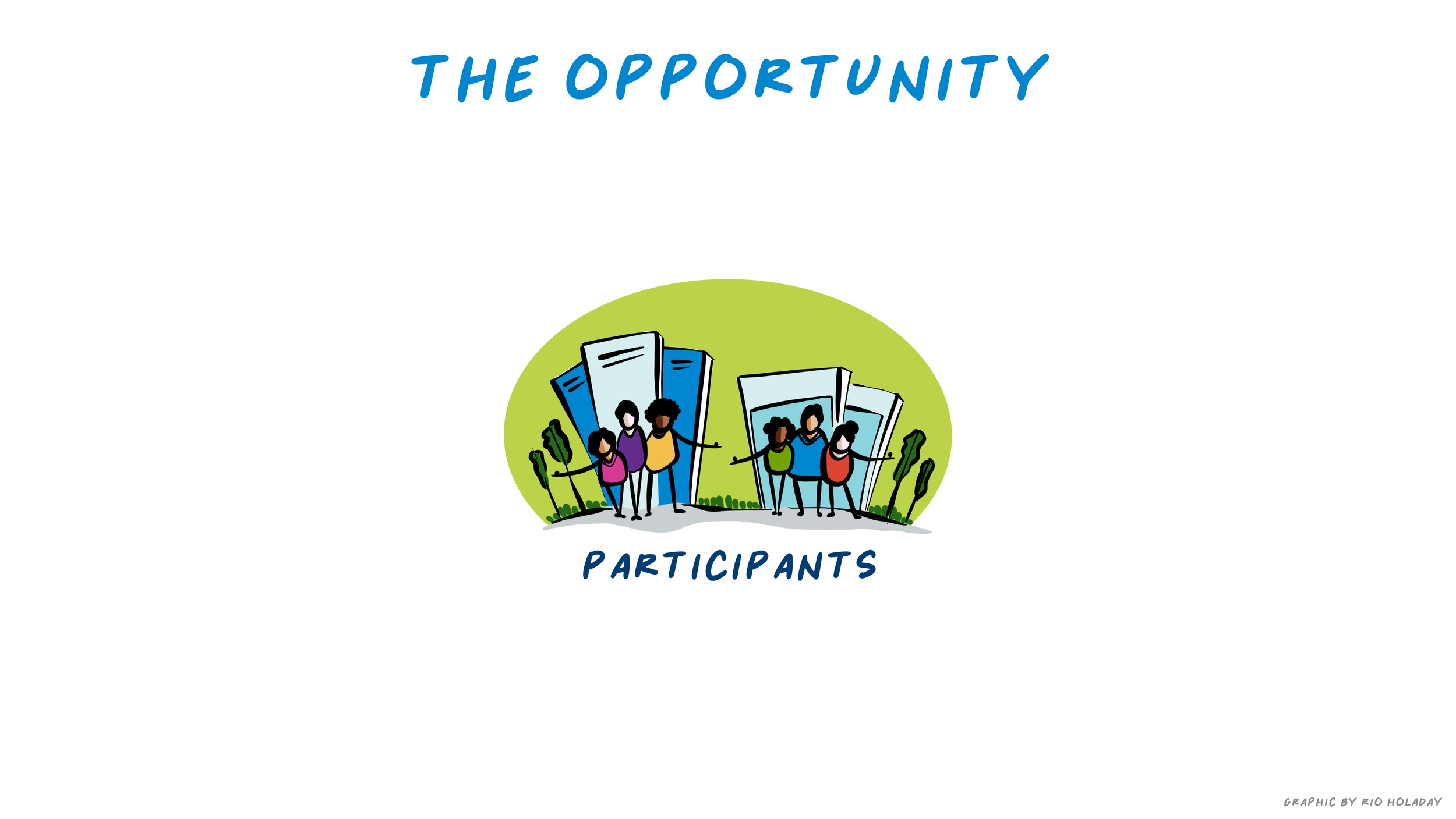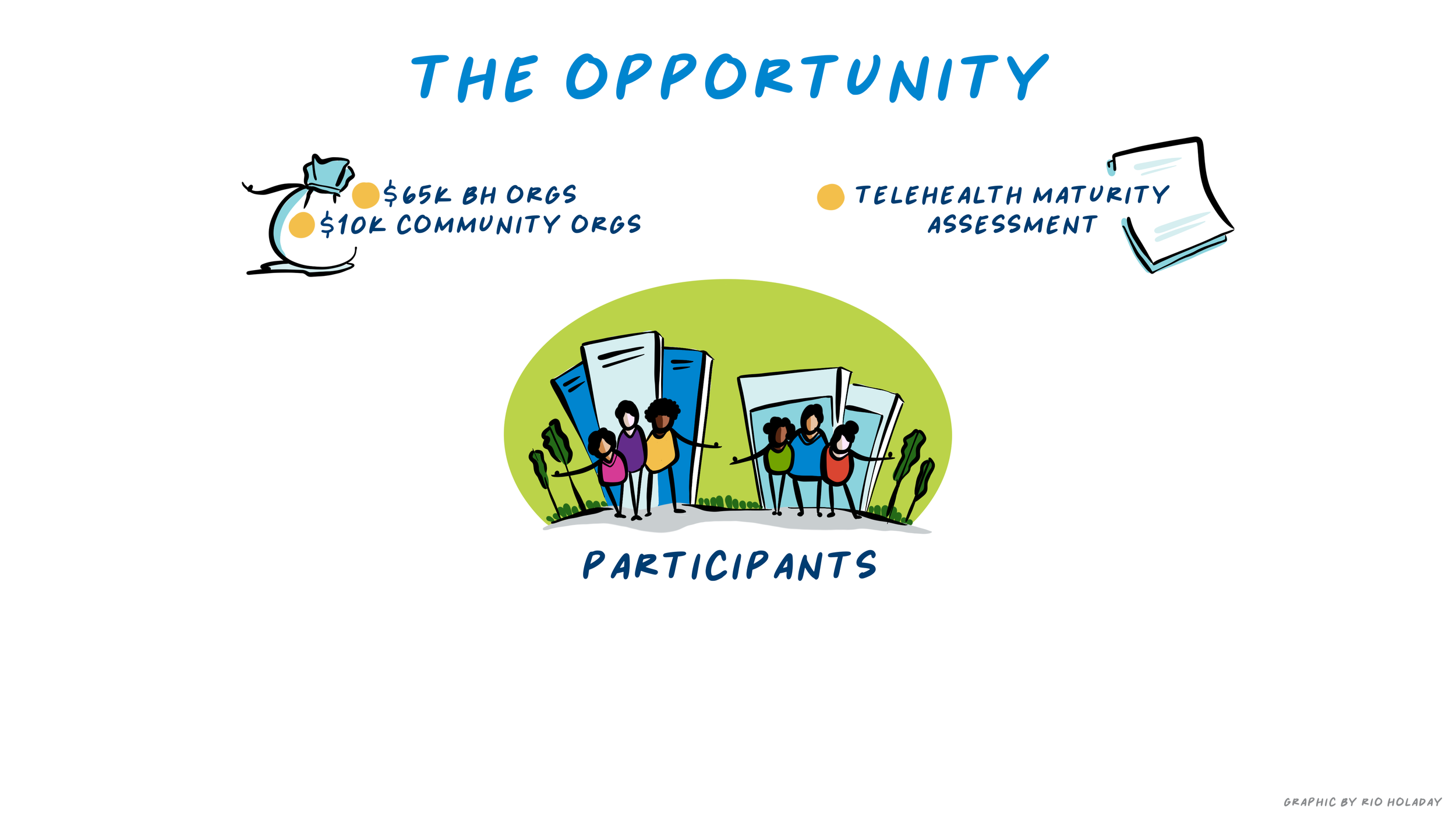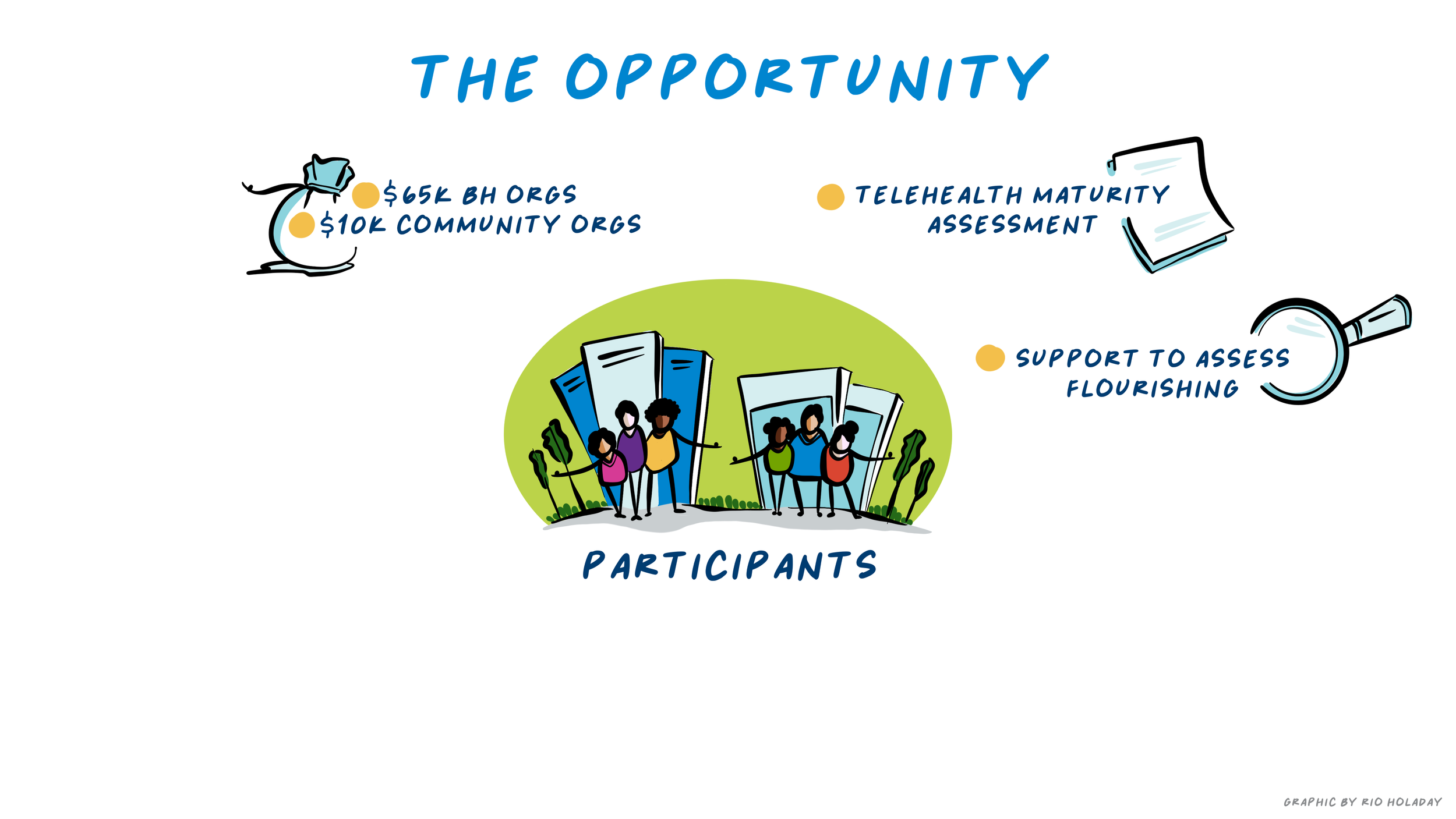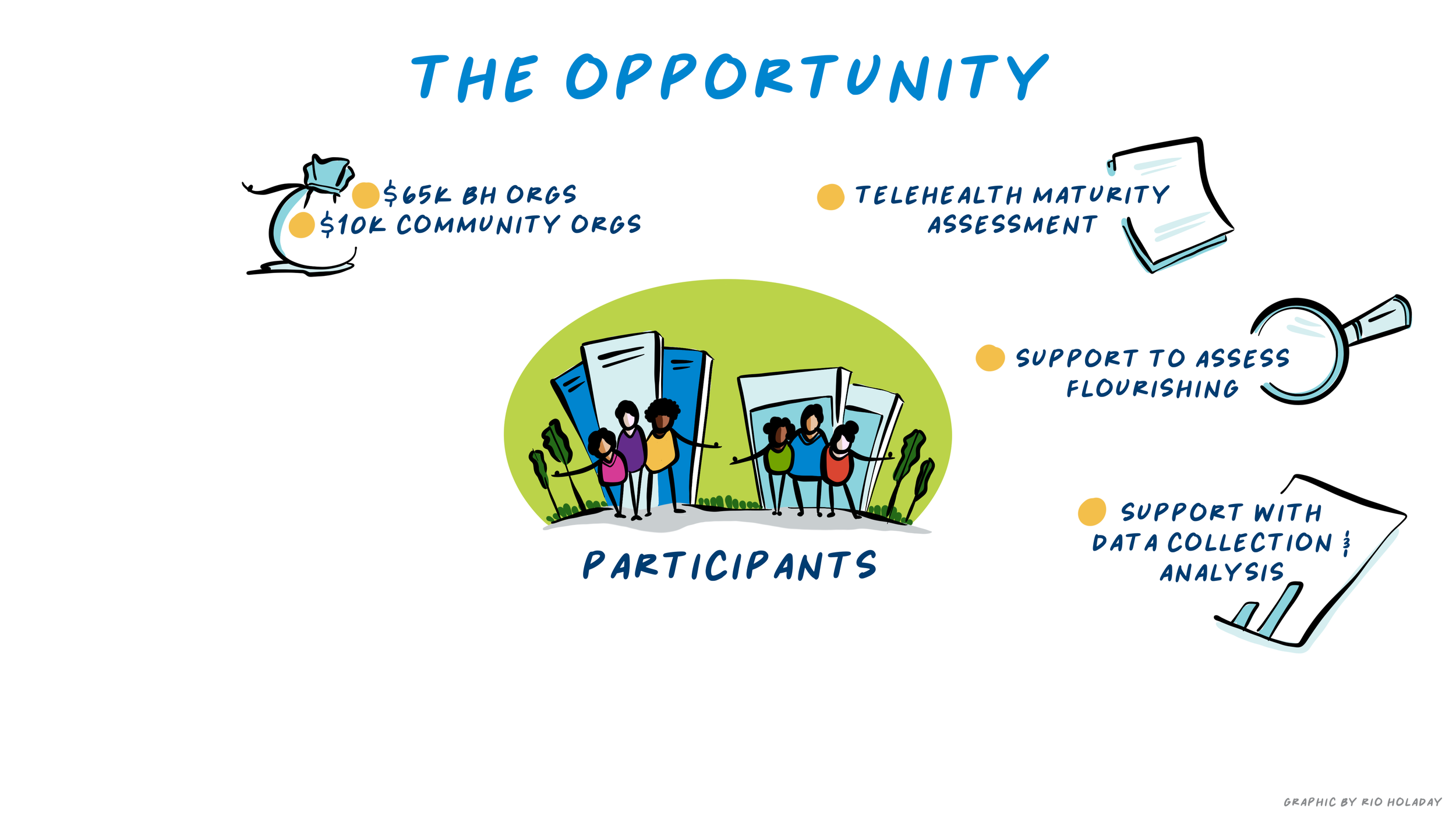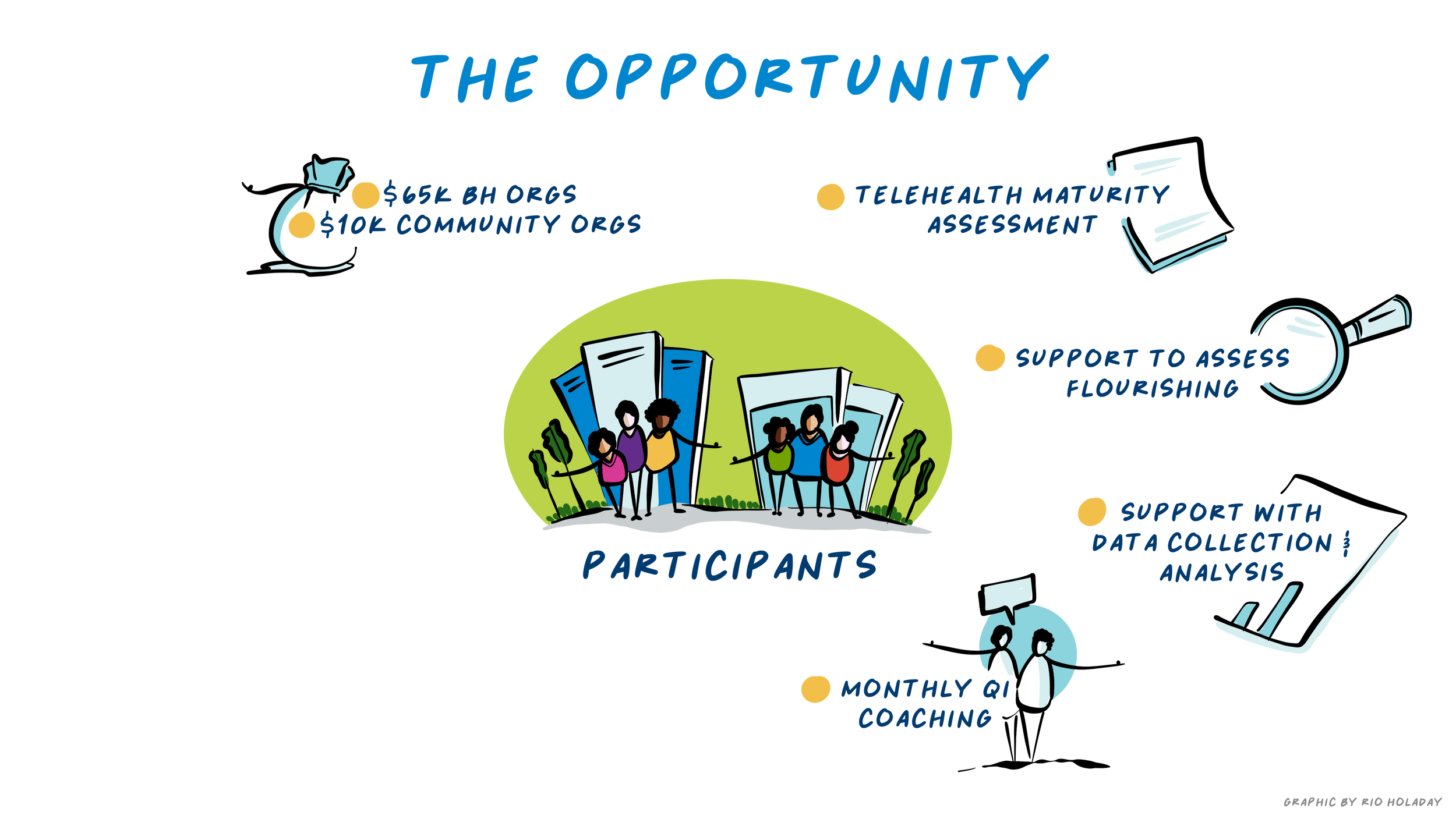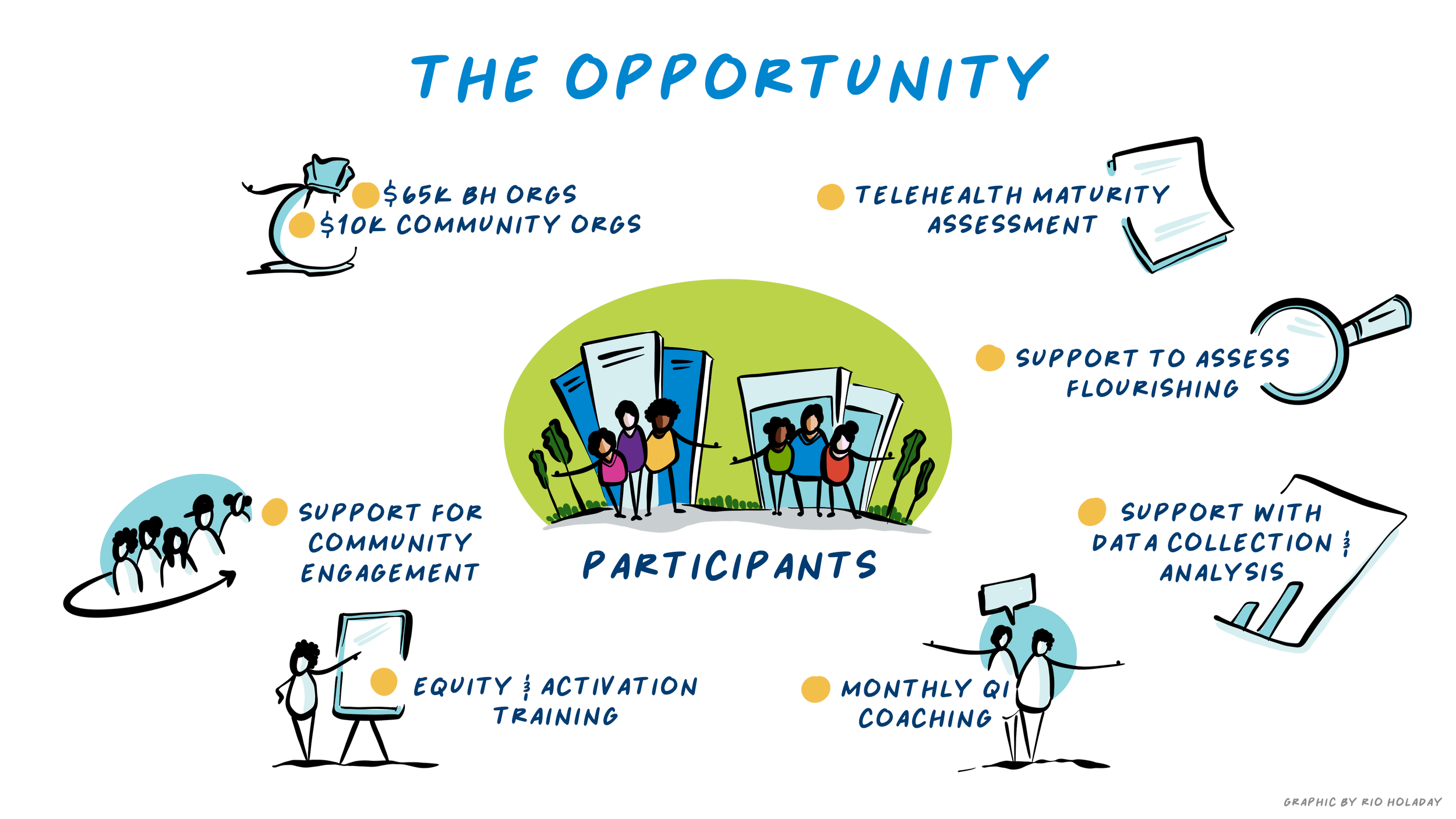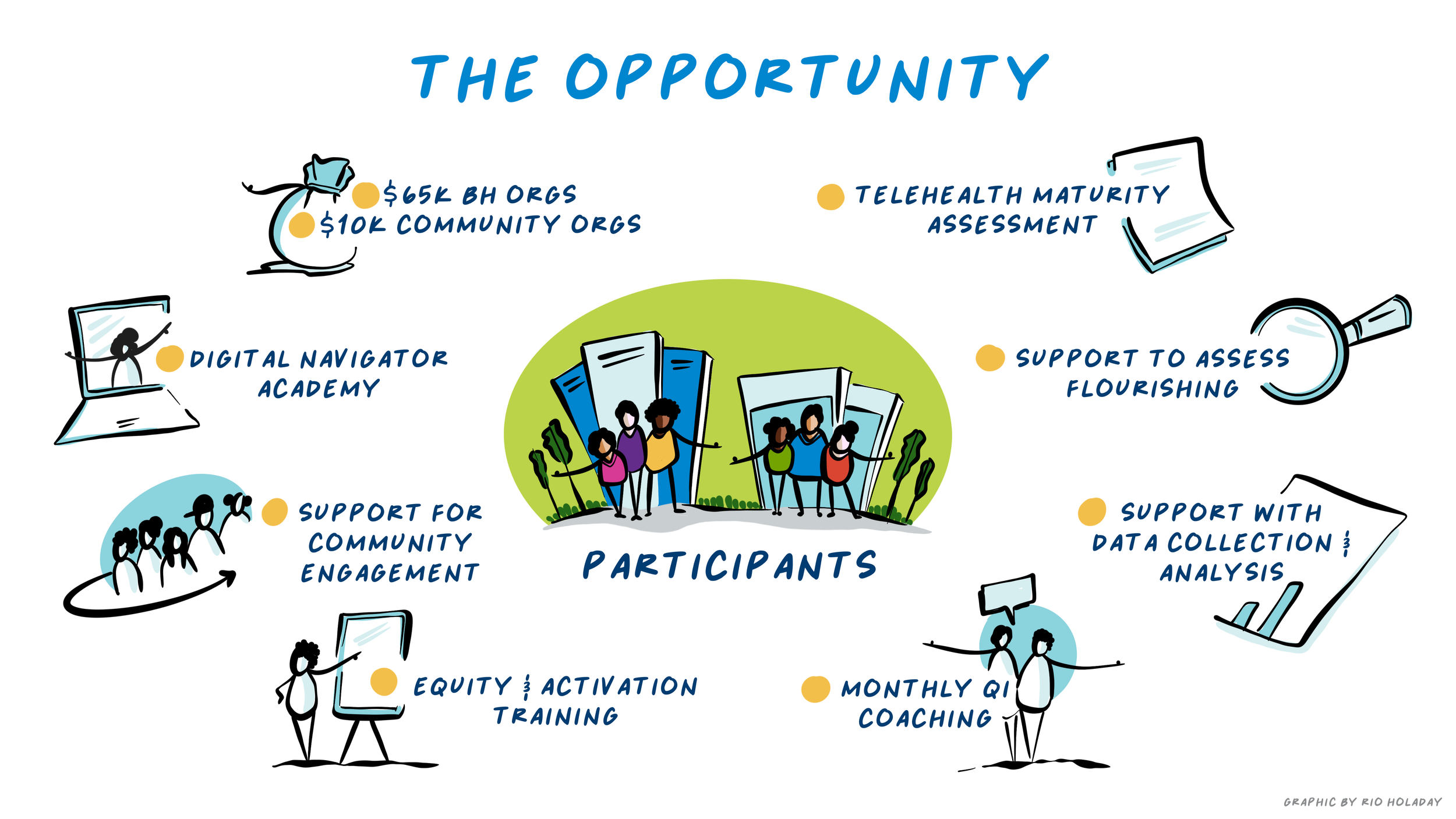Jump to: Graphic recording | Studio work | Discounts | FAQs | New to working with visuals or with Rio? Start here!
GRAPHIC RECORDING
Benefits. Great for making participants feel seen, heard, and engaged; and for making making dense information beautiful and accessible.
Ideas. Charts and timelapse videos can be used as event artifacts, social media material, or shared with participants, funders, and community members.
Role. Rio can silently capture key themes and quotes, or actively mirror back what she’s hearing and ask for participant reactions.
Current status: Rio only works digitally on an iPad. She can participate virtually or in-person. Rio uses a tablet and projector for in-person events.
How graphic recording works
GRAPHIC RECORDING INCLUDES:
Rio’s expert presence in the room, distilling and illustrating the main ideas and information shared by speakers, facilitators, and participants
Graphics shared as high-resolution PNG files
Bonus 30-second timelapse video of each graphic
Graphic recording rates
VIRTUAL
Starts at $1,340 for the first hour
Each hour thereafter is $360 (billed in whole hours only)
IN PERSON
Flat rate of $4,130 per day
Plus a travel fee of $515 (if travel is required on a day other than the event day)
These rates are shared online for ease and transparency. Each project varies, and Rio always provides a proposal with a scope, budget, and applicable discounts. Rio is based in Truckee, CA (near Lake Tahoe).
Graphic recording samples
STUDIO WORK
Benefits. Great for planned and polished visual summaries of an event for funders, participants, or community members.
Ideas. Can be used to show action steps, commitments, processes, logic models, or key points for a presentation.
Use. Typically complements written materials like a report, memo, or grant application. May be used to spice up a presentation. Can be sized for social media, paper handouts, slides, and more.
Important: A studio piece is not created live, unlike a graphic recording. Instead, Rio and the client go back and forth on text, layout, and design.
How studio work… works
STUDIO WORK INCLUDES:
Initial design consultation session
Intake process where client provides exact text, preferred sizing, and more
Draft for client review
Feedback call
Final graphic shared as a high-resolution file
Studio work rates
Studio pieces start at $2,160 and can go upwards of $5,000.
The final cost depends on the complexity of the graphic, amount of synthesis required, and amount of feedback.
Rio always provides a proposal with a scope, budget, and applicable discounts.
Studio work samples
DISCOUNTS
Why. In order to make my work accessible to as many conversations and communities as possible, I offer a series of discounts.
How it works. My standard practice is to offer these discounts and allow clients to determine (1) whether they are eligible and (2) whether they want or need to use a discount. I ask clients to decide because it invites a conversation about equity into the procurement process.
Good faith practice. Not all clients who are eligible for a discount will decide to take it.
Racial equity discount
Either a 15% or 25% discount for events that explicitly address racial equity and integrate equity practices into the planning.
Two tiers of discounts account for the variety in budget size among folks working on racial equity. Some may choose the entire 25% while others may only need 15%.
Here is a list of guiding questions that provide insight into what I mean by racial equity. These questions are meant to be hard and push organizational thinking; they are not meant to be an exhaustive checklist.
Does this gathering or graphic address racism, not race, as a social and political determinant of health?
Does this process or graphic center and serve people historically at the margins?
Does the ultimate outcome include transferring power to those who currently have less?
Are the majority of people crafting and attending this event, or designing this graphic, BIPOC?
What is the difference in privilege and positionality between the funding organization and the graphic recorder? Rio's clients range from Fortune 500 companies to grassroots groups; she moves though the world as a single, able-bodied, second-generation Asian American woman.
Abundant economy discount
A discount offered at Rio’s discretion.
Capital does not flow equally in our society. In order to make my work accessible for as many conversations and communities as possible, I have an abundant economy policy. In practice, this means I state my standard rates and, if they are still too high, am happy to find a trade or donation that works for both of us. This can be applied on top of a racial equity discount if needed.
NEW: SF Bay Area travel discount
An optional discount on the travel fee and travel expenses associated with in-person events in the San Francisco Bay Area.
YOUR FAQ’S
MY FAQ’s
-
Graphic recording is the real-time translation of conversations or presentations into text and pictures.
Graphic recorders do three things live:
Listen to everything that's being said
Synthesize themes, connections and key quotes
Document the conversation using words and images (which is the part you actually see!)
For more information, check out details below on graphic recording and rates and scoping.
-
This is the term I use for any visual work that isn’t live. It ranges from creating templates to illustrating slides to designing polished visuals.
For more information, check out details below on studio work and rates and scoping.
-
Absolutely. Here are some real examples of mixing-and-matching:
Graphic recording during a focus group, conversation, or brainstorm session + creating a studio piece of takeaways
Designing templates for a facilitated activity + graphic recording during the activity report back
Illustrating slides for a program launch + graphic recording during the live launch + studio piece of visual assets for marketing
-
I bet you do! :) I can capture breakouts, we just have to be strategic about it. TL;DR:
Reading through notes is not graphic recording.
If I move from breakout to breakout, then I’m skewing the data by only capturing what’s said when I’m there.
-
All graphic recording and studio work rates are shared online for ease and transparency.
I also offer a range of discounts in order to make this work accessible to more conversations and communities.
-
Absolutely. A common structure for longer projects is to include both:
Anchor tasks, such as graphic recording for x number of meetings
An optional Technical Assistance (TA) Bank of “up to x hours or y dollars” that we can use for ad hoc work
It’s wise to go into longterm projects expecting things to change and emerge, and I prefer to structure contracts that give us maximum flexibility.
-
Get in touch and schedule a time to chat! We’ll talk about what you’re looking for and whether and how I can support you.
Then I’ll give you a proposal with a budget for your project. Nothing in the proposal should be a surprise; it’s just about getting figures, deliverables, and assumptions in one place at the beginning.
If the proposal looks good to you, we’ll enter into the contracting phase and then get started!
-
Put another way, what’s the problem you want to solve with visuals?
This is my favorite place to start.
-
Imagine a spectrum. At one end, we’re using visuals to move a conversation forward. I’m drawing the themes, key quotes, and connections, and I’m interacting with the group to ask what’s missing. The end image is messy, but it represents the conversation that was had.
At the other end, we’re using visuals to tell a story that’s a little more polished. Maybe a group came up with 10 action items and you’re showing those to the Board. Or you’re highlighting 5 research findings and want to put the visual product on your website. You already have an idea of what you want the final image to look like.
In the middle, we’re using visuals to support participants’ experience of an event. Maybe there are illustrated slides, templates for activities, or graphic recording of keynote speeches that folks can have as artifacts.
Once I know what your vision is, I can offer specific ideas.
-
A journey? Key themes? Final decisions? Relationships in the room? Quotes from VIPs? Something else?
-
This question helps us check for feasibility.
For example, if you want a live graphic recording of the 10 Elements of a Very Important Topic, then let’s make sure those 10 elements are getting discussed live, rather than sorted and voted on in google docs and breakouts.
Or, let’s switch to a studio piece where you have time to synthesize and decide on the exact text, then we create a polished visual together.
-
Most folks approach me because they want a graphic recorder. But after going through all these questions, sometimes it turns out that graphic recording isn’t what you need, and you’d be better served by a different visual tool. I’m always glad when we figure this out at the beginning!
-
Clients typically ask me to sign boilerplate contracts that turn ownership of the final illustrations over to them. As a graphic practitioner, each illustration contains much more than client content; it also includes my visual style, visual signature, and way of thinking. Therefore, retaining ownership of my work is a top priority.
When I ask folks what is most important to them, it often turns out that they care most about confidentiality, unlimited use of the illustration, or something else other than ownership. Therefore, I always ask:
(1) whether you’d like me to sign an NDA or other agreement, and
(2) whether you’d be open to a licensing agreement.
A good starting place is the Creative Commons Attribution-No Derivatives license. This means that I retain ownership and copyright, but that you're able to use the illustrations however you wish in the future, as long as you give proper credit and don't edit the graphic.
If ownership matters most to you in the end, then I'm still happy to move forward. I figure that these are important conversations to have early in a partnership, and I like to bring this up at the beginning.
